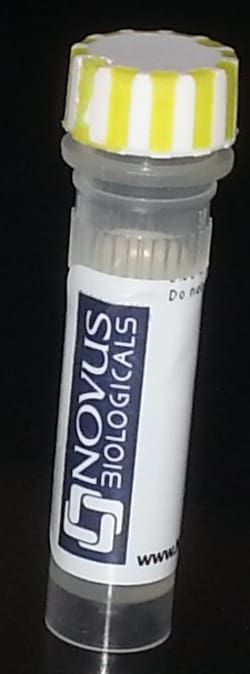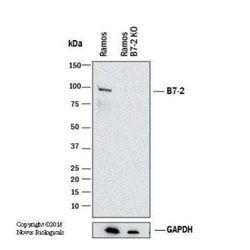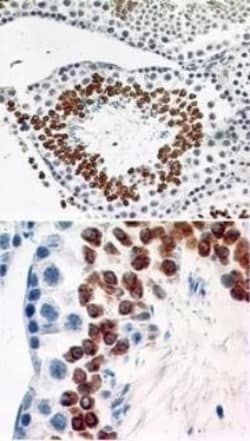CD2 Antibody (RPA-2.10), Alexa Fluor™ 405, Novus Biologicals™
Manufacturer: Novus Biologicals
Select a Size
| Pack Size | SKU | Availability | Price |
|---|---|---|---|
| Each of 1 | NBP225200W-Each-of-1 | In Stock | ₹ 56,426.00 |
NBP225200W - Each of 1
In Stock
Quantity
1
Base Price: ₹ 56,426.00
GST (18%): ₹ 10,156.68
Total Price: ₹ 66,582.68
Antigen
CD2
Classification
Monoclonal
Conjugate
Alexa Fluor 405
Gene Accession No.
NP_001758
Gene Symbols
CD2
Immunogen
A recombinant protein was used as the immunogen for the CD2 antibody.
Quantity
0.1 mL
Research Discipline
Adaptive Immunity, Apoptosis, Immunology
Gene ID (Entrez)
914
Target Species
Human
Form
Purified
Applications
Western Blot, Flow Cytometry, Immunohistochemistry, Immunohistochemistry (Frozen)
Clone
RPA-2.10
Dilution
Western Blot, Flow Cytometry, Immunohistochemistry, Immunohistochemistry-Frozen
Gene Alias
CD2 antigen, CD2 antigen (p50), sheep red blood cell receptor, CD2 molecule, Erythrocyte receptor, FLJ46032, LFA-2, LFA-3 receptor, lymphocyte-function antigen-2, Rosette receptor, SRBC, T11, T-cell surface antigen CD2, T-cell surface antigen T11/Leu-5
Host Species
Mouse
Purification Method
Protein G purified
Regulatory Status
RUO
Primary or Secondary
Primary
Test Specificity
This product reacts with Human.
Content And Storage
Store at 4C in the dark.
Isotype
IgG1 κ
Description
- CD2 Monoclonal specifically detects CD2 in Human samples
- It is validated for Western Blot, Flow Cytometry, Immunohistochemistry, Immunohistochemistry-Frozen.


